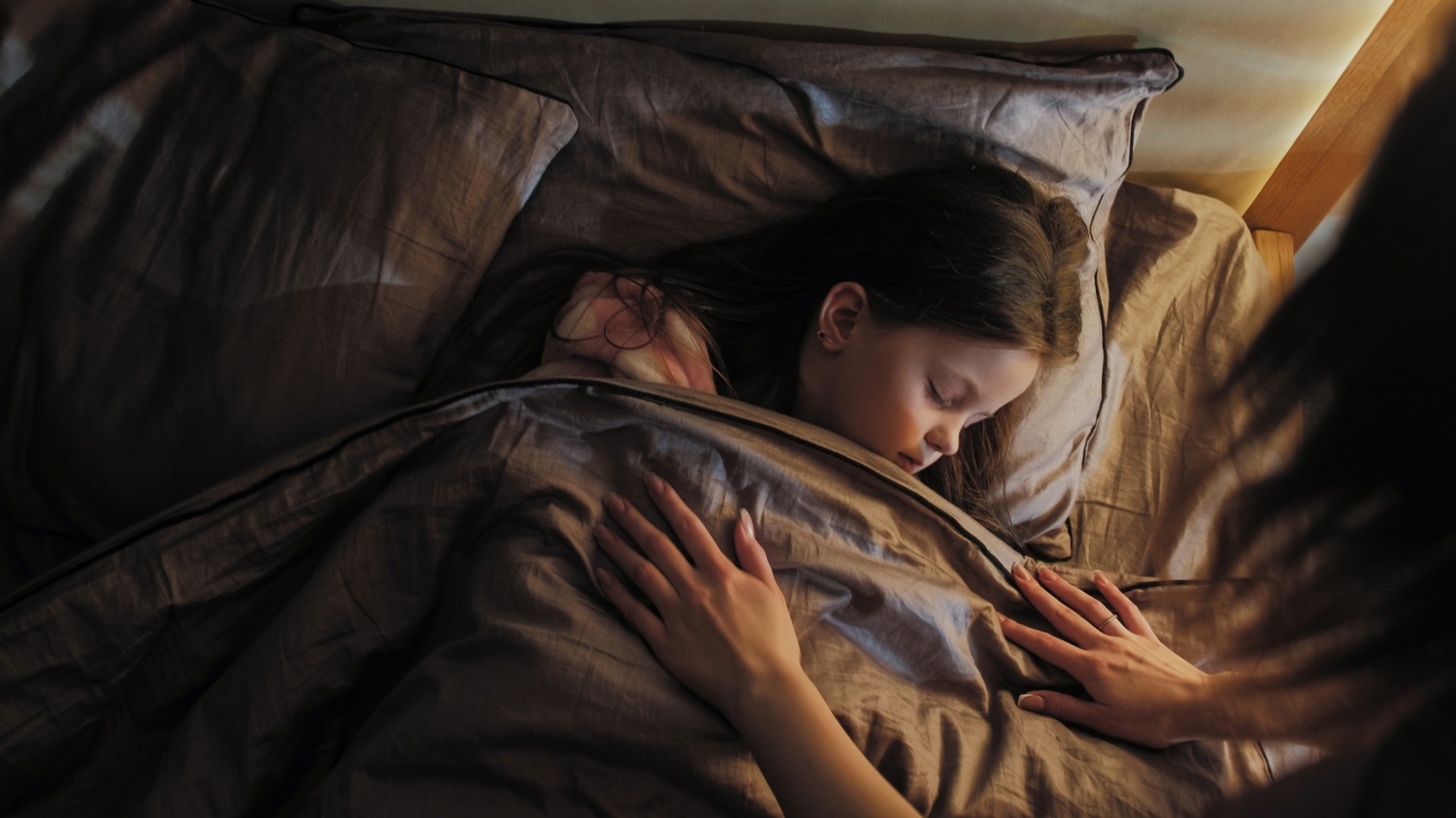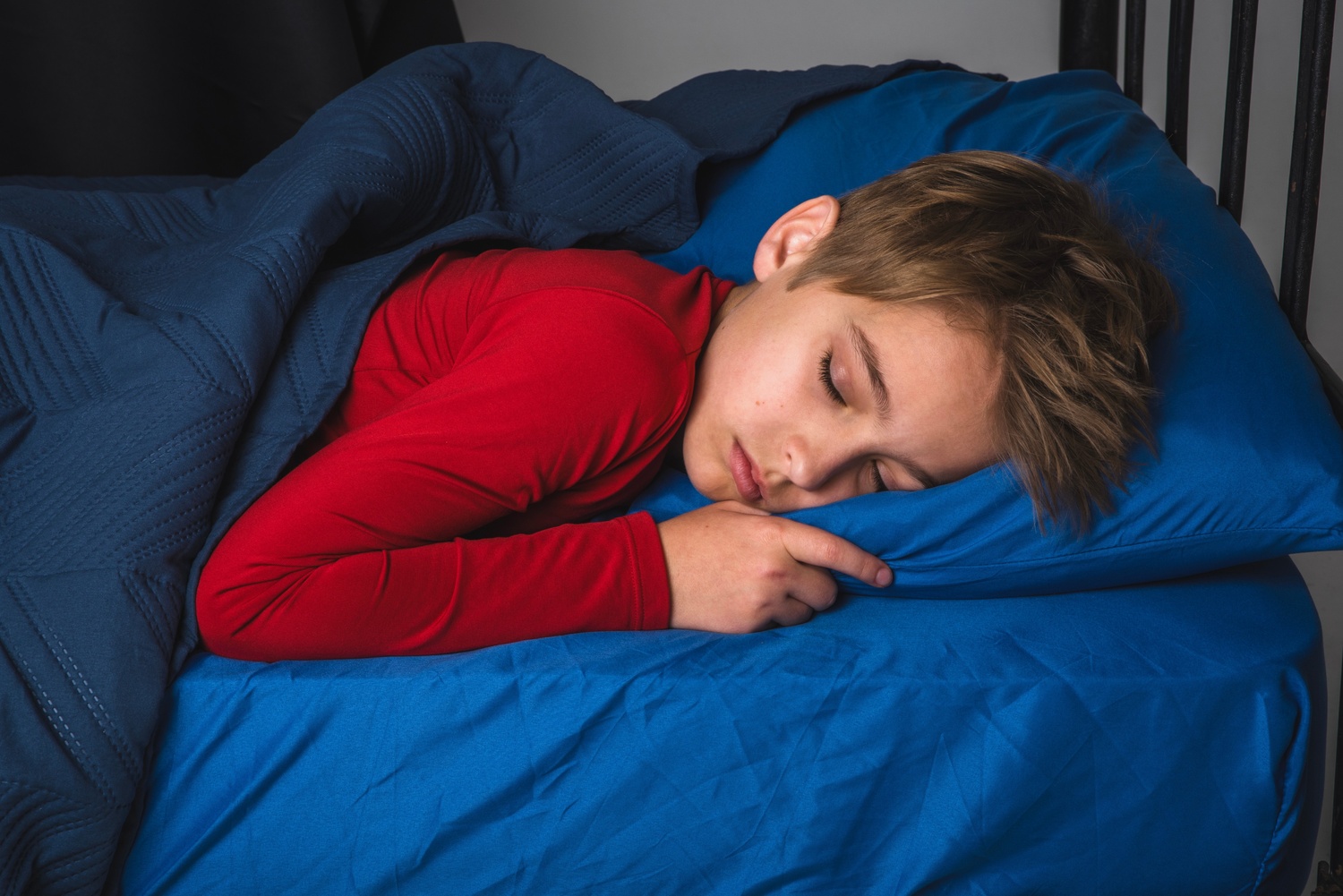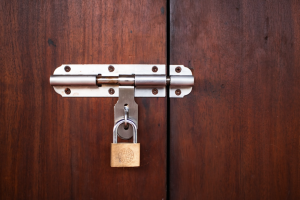What You Should Know About Weighted Blankets for Kids

Weighted blankets have become a popular calming tool for children, particularly those with sleep difficulties, anxiety, or sensory issues. These specially designed blankets use deep pressure stimulation, a technique that applies gentle, even pressure across the body. This mimics a soothing hug, relaxing the nervous system and creating a sense of comfort and security. This article covers how weighted blankets work, their benefits for children, material options, and specific use cases like autism and ADHD.
How Weighted Blankets Work
Weighted blankets work by using deep pressure touch (DPT), which involves applying gentle, consistent pressure across the body. This pressure stimulates the production of serotonin, a calming hormone, and reduces cortisol, a stress hormone, which can help regulate the nervous system. As a result, children who use weighted blankets often feel more relaxed, less anxious, and experience improved sleep quality. It's similar to how swaddling helps newborns feel secure, or why a firm hug can be comforting during stressful moments.
Types of Materials and Fillers
Weighted blankets come in various materials to suit different needs. The outer fabric is typically made from cotton, fleece, or bamboo blends, chosen for breathability and comfort. The fillers, which give the blanket its weight, can include micro glass beads, plastic pellets, or even natural materials like sand. Glass beads offer even weight distribution for a smoother, quieter feel, while plastic pellets create a slightly bulkier texture. Some blankets use steel shot beads for added durability.
For children with sensory processing issues, a weighted blanket made with soft minky fabric can provide a tactile experience they find comforting. For children who sleep hot, breathable cotton or bamboo blankets with glass beads are better options because they allow for better airflow.
Potential Benefits for Children
A child can experience a range of benefits when using a weighted blanket. These benefits go beyond just physical comfort, offering support for emotional well-being and everyday functioning.
- Improving sleep quality: For kids who struggle to fall asleep or stay asleep, the deep pressure of a weighted blanket calms the nervous system, aiding quicker sleep onset and reducing nighttime awakenings. This effect is especially helpful for kids who experience restlessness or bedtime anxiety.
- Reducing symptoms of anxiety and stress: The gentle, even weight can reduce feelings of anxiety by triggering the release of serotonin and dopamine, which are mood-regulating chemicals in the brain. In stressful situations like school transitions or new environments, the comforting pressure helps kids stay grounded.
- Enhancing focus and reducing hyperactivity: The calming effects extend to attention and behavior. For children with ADHD or other attention-related conditions, the blanket’s weight helps them stay grounded, leading to better concentration on tasks.
- Helping with sensory processing challenges: Children with sensory processing disorders often struggle with regulating their responses to everyday sensations. The blanket’s consistent pressure can make it easier for them to manage sensory input by providing a predictable, soothing sensation.
Overall, these blankets offer valuable support, but choosing the right one for the child's needs and consulting a professional ensures the best results.
Specific Use Cases
Weighted blankets can be beneficial for children facing specific challenges. Their therapeutic effects make them useful for managing symptoms associated with various conditions.
How They Can Help Children with Autism
Children with autism often experience sensory sensitivities that make everyday situations overwhelming. During times of heightened stress, such as transitioning from one activity to another or after a busy day at school, the blanket’s comforting weight can help calm the nervous system. This makes it easier for the child to regain focus and control.
Benefits for Children with ADHD
Kids with ADHD often have difficulty staying still or maintaining attention. The grounding effect of the weighted blanket can help manage hyperactivity by providing tactile input that encourages stillness. For instance, using a weighted blanket during homework time can help minimize distractions and increase the child’s ability to concentrate.
In settings where extended focus is needed, such as long car rides or seated classroom activities, a smaller weighted lap pad can be effective. It provides a calming touch without being too restrictive.
Assisting Children with General Sleep Disturbances
Sleep issues are common among children, ranging from trouble falling asleep to frequent awakenings. The deep pressure from a weighted blanket can help settle an active mind and body, making it easier to drift off and stay asleep longer. This can be especially beneficial for children who are prone to nightmares or anxiety-driven restlessness.
Each of these cases highlights the diverse applications of weighted blankets in helping children with unique needs. With the right approach, these blankets can offer more than just warmth—they can provide a sense of relief and consistency.
Final Thoughts
Choosing a weighted blanket for a child involves more than picking the right weight or fabric. It's about understanding the unique needs and preferences that can make a big difference in their daily lives. These blankets can offer comfort, better sleep, and relief from anxiety or sensory challenges. While the potential benefits are promising, it’s important to approach the decision thoughtfully, considering individual circumstances. Consulting a professional can help you choose the most suitable option for your child’s well-being.







